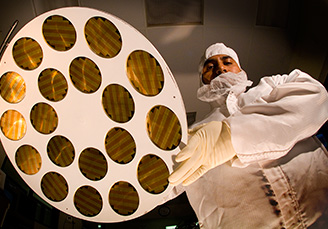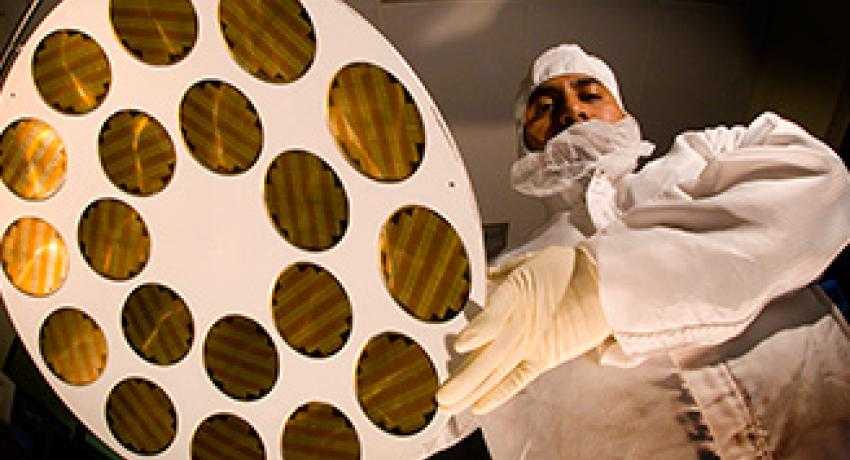Spectrolab Sets Solar Cell Efficiency Record — Again
 Over the past year, the records for most efficient PV cells continue to fall, showing that the industry continues to push forward with new technological innovations. In fact, Boeing’s Spectrolab announced yesterday (Nov. 18) that its newest multi-junction PV cell converted 38.8 percent of the sun’s light into electricity—without concentration.
Over the past year, the records for most efficient PV cells continue to fall, showing that the industry continues to push forward with new technological innovations. In fact, Boeing’s Spectrolab announced yesterday (Nov. 18) that its newest multi-junction PV cell converted 38.8 percent of the sun’s light into electricity—without concentration.
The new record surpasses Spectrolab’s previous record by 1 percent, a spokesperson for the company said. The new record also comes only about half a year after Boeing announced the former record.
The device uses a new Boeing semiconductor bonding technology. "Improving solar cell manufacturing technology is at the core of what we do at Spectrolab,” said Spectrolab President Troy Dawson. “We will continue to innovate new ways to achieve even better results.”
The cells that Spectrolab is producing aren’t the same type as those in rooftop solar array. Cells in most rooftop arrays are usually crystalline silicon photovoltaics. The cells Spectrolab is developing use a series of more expensive semiconductors like Gallium, Indium and Arsenide layered and tuned to absorb different spectrums of the sun’s light. The resulting cells are much more efficient but also much more expensive.
Increased production and Boeing’s new, larger manufacturing facility opened earlier in 2013, coupled with the company's ability to manufacture the cells from larger wafers—as well as other high-efficiency PV makers around the world—are helping to bring the cost of the cells down.
Cells like those that Boeing is developing are used for more specialized purposes, like space exploration, spacecraft or unmanned aerial vehicles, according to Spectrolab. They’re also used in more terrestrial applications when used in concentrators. At this point, the highest levels of efficiency under concentration were achieved by Soitec and the Fraunhofer Institute For Solar Energy Systems. In October, the cells were able to convert 44.7 percent of the sun’s light into electricity under the concentration of 297 suns. Soitec and its partners anticipated that they could break the 50 percent barrier with future efficiency increases.
Boeing hasn’t said its new champion cell could surpass 50 percent efficiency, but earlier this year, when the company announced 37.8 percent efficient cells, Nasser Karam, the company’s Vice President for Advanced Technology, anticipated that the cells could surpass 45 percent efficiency, even under low levels of solar concentration.
The cells are also much smaller than conventional silicon PV cells. As such, an inexpensive concentrator, like a Fresnel lens, can be placed over the cell, allowing the lens to concentrate the sun’s power on the cell hundreds of times, reaching those higher efficiency levels.




